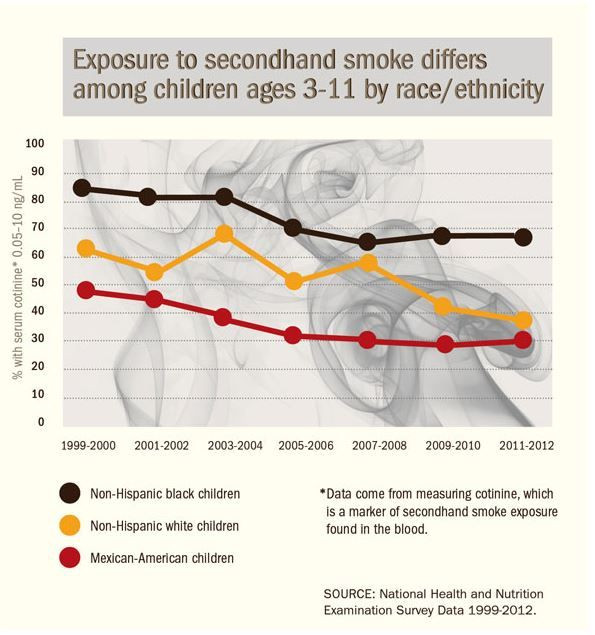CDC Reports Secondhand Smoke Exposure Is Falling, But It Still Kills 400 Children A Year

Two in five children between the ages of 3 and 11 — about 15 million kids — are exposed to secondhand smoke each year. Often parents believe the level of secondhand smoke their children may be exposed to is minimal and so not harmful; however, even the smallest amount of smoke can be unsafe for infants and children. Secondhand smoke and the harmful chemicals contained within it are known causes of Sudden Infant Death Syndrome, respiratory infections, ear infections, and asthma attacks in infants and children. In fact, secondhand smoke kills more than 400 infants every year, the Centers for Disease Control and Prevention reports.

Tobacco smoke is a complex mixture of thousands of compounds, which change over time as they undergo chemical reactions once becoming airborne. Nicotine and its metabolite cotinine — what nicotine becomes after entering your body and changing — are commonly used when studying secondhand smoke and its effects. Ambient nicotine can be measured accurately and sensitively, and cotinine can be measured in saliva, blood, and urine. Sometimes, particulate matter (PM) is used as a "tracer" in many heavy-smoking environments, such as bars and restaurants, where instruments can provide immediate data without the need for a laboratory.
Most commonly, children breathe in smoke exhaled by smokers or from burning tobacco products in the home, the primary source of secondhand smoke for most nonsmokers. About 80 million (one in four) Americans live in multiunit housing where they are exposed to unwanted smoke coming from other units or common areas where smoking is allowed. In particular, children, the elderly, and people with disabilities are affected in this way. The good news is, overall, exposure to secondhand smoke has declined among American non-smokers. It dropped by half — from one in two nonsmokers exposed in 1999-2000 to just one in four nonsmokers exposed in 2011-2012.
Exposure remains especially high, though, for three key groups of people:
- Nearly half of black nonsmokers are exposed to secondhand smoke, including seven in 10 children.
- More than one in three nonsmokers, which includes children, who live in rental housing are exposed to secondhand smoke.
- More than two in five nonsmokers who live below the poverty line, this also includes children, are exposed to secondhand smoke.
The chart below details the exposure rates of nonsmoking Americans. Children between the ages of 3 and 11 have a 41 percent higher exposure rate; tweens and teens between the ages of 12 and 19 have a 34 percent higher exposure rate; people older than 20 have a 21 percent higher exposure rate. Nonsmoking Americans who own their home have a 19 percent higher exposure rate, renters 37 percent higher rate, and those below the poverty level 43 percent higher exposure rate. Naturally, children who live in these households are impacted by these different exposure rates.




























